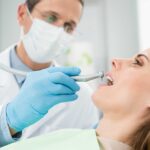Handling Dental Emergencies Quick Guide to Emergency Dental Care
Dental emergencies can catch us off guard, but knowing how to respond can make a significant difference in preserving your oral health. This guide offers an in-depth look at handling dental emergencies effectively, from recognizing different types of emergencies to taking immediate actions and seeking professional help.
Types of Dental Emergencies
Trauma-Related Emergencies
Accidents can result in knocked-out teeth or broken teeth. In the case of a knocked-out tooth, time is of the essence. By following these steps, you can increase the chances of saving the tooth:
- Stay Calm: Panicking can lead to further mishaps. Keep a level head.
- Handle the Tooth: Hold it by the crown (top part), not the root. Touching the root can damage the cells necessary for reattachment.
- Rinse Gently: If dirty, rinse the tooth gently with milk or saline. Do not scrub.
- Reinsert If Possible: If the socket is undamaged and clean, try to reinsert the tooth, and hold it in place with clean gauze.
- Preserve the Tooth: If reinsertion isn’t feasible, place the tooth in milk or your saliva. Seek dental care immediately.
For a broken tooth, follow these steps:
- Rinse Your Mouth: Gently rinse your mouth to clean the area.
- Save the Pieces: If possible, collect the broken pieces.
- Apply Cold Compress: Use a cold compress to reduce swelling.
- Contact Your Dentist: Reach out to your dentist for evaluation and repair options.
Infection-Related Emergencies
Infections can lead to abscesses, swelling, and pain. If you suspect an infection:
- Rinse Your Mouth: Rinse with warm saltwater to reduce inflammation.
- Pain Relief: Over-the-counter pain relievers can provide temporary relief.
- Avoid Popping an Abscess: Never attempt to pop an abscess. Seek immediate dental care to prevent the infection from spreading.
Pain-Related Emergencies
Severe toothaches can be excruciating. Follow these steps:
- Rinse Your Mouth: Gently rinse your mouth with warm water.
- Floss Gently: Use dental floss to remove any debris around the affected tooth.
- Pain Relief: Over-the-counter pain relievers may help alleviate discomfort.
- Consult Your Dentist: Schedule an appointment with your dentist for proper diagnosis and treatment.
Immediate Steps to Take
When a dental emergency strikes, immediate action is crucial:
- Stay Calm: Keeping a clear head allows you to think rationally and act effectively.
- Contact Your Dentist: Call your dentist’s emergency line for guidance or seek medical attention when necessary.
Common Dental Emergency Scenarios and Solutions
Knocked-Out Tooth

A knocked-out tooth requires swift action to increase the chances of saving the tooth:
- Handle with Care: Pick up the tooth by the crown, avoiding contact with the root.
- Rinse Gently: If dirty, rinse the tooth gently without scrubbing.
- Attempt Reinsertion: If possible, try to place the tooth back in its socket.
- Preserve the Tooth: If reinsertion isn’t successful, keep the tooth in milk or saliva and seek immediate dental care.
Broken or Chipped Tooth
For a broken or chipped tooth:
- Rinse the Area: Rinse your mouth to clean the area.
- Save the Pieces: Collect any broken pieces.
- Reduce Swelling: Apply a cold compress to manage swelling.
- Consult Your Dentist: Reach out to your dentist to discuss repair options.
Severe Toothache
Dealing with a severe toothache requires careful attention:
- Rinse Your Mouth: Gently rinse your mouth with warm water.
- Floss Gently: Use dental floss to remove debris around the affected tooth.
- Manage Pain: Over-the-counter pain relievers may help.
- Professional Evaluation: Schedule an appointment with your dentist for proper diagnosis and treatment.
Object Lodged Between Teeth
When something gets stuck between your teeth:
- Gentle Removal: Attempt to remove the object using dental floss.
- Avoid Sharp Objects: Refrain from using sharp objects, which can cause injury.
Lost Filling or Crown
In the event of a lost filling or crown:
- Use Dental Cement: If available, use dental cement to cover the exposed area.
- Contact Your Dentist: Schedule a visit with your dentist for restoration.
Abscess or Swelling
For an abscess or swelling:
- Rinse with Warm Saltwater: Gently rinse your mouth to alleviate discomfort.
- Pain Relief: Over-the-counter pain relievers can provide temporary relief.
- Seek Urgent Dental Care: Contact your dentist promptly to address the infection.
Prevention and Preparedness
Preventing Dental Emergencies
Taking preventive measures can significantly reduce the risk of dental emergencies: Regular Dental Check-Ups: Routine visits allow your dentist to catch and address potential issues early.Use Mouthguards: Wear mouthguards during sports activities to protect your teeth from trauma.Mind Your Diet: Limit consumption of hard or sticky foods that can lead to fractures.Creating a Dental Emergency Kit Putting together a dental emergency kit ensures you’re prepared for unexpected situations: Essential Supplies: Include gauze, dental cement, pain relievers, a small container, and your dentist’s contact information.Accessible Storage: Keep the kit in an easily accessible location at home.
When to Seek Professional Help
Certain scenarios warrant immediate professional attention:Uncontrolled Bleeding: If bleeding doesn’t stop, seek help immediately.Severe Pain or Discomfort: Persistent and intense pain requires prompt evaluation.Signs of Infection: Fever, swelling, and other signs of infection demand urgent dental care.Remember, timely intervention is essential to prevent complications. Seek professional help promptly.
Conclusion
Handling dental emergencies involves a combination of knowledge, preparedness, and quick action. By understanding the various types of dental emergencies and following the steps outlined in this guide, you can confidently navigate these situations. Share this valuable information with your loved ones to ensure everyone is well-equipped to manage dental emergencies effectively.
Table of Contents
Recent post

Dental Makeovers: Transforming Your Smile with Cosmetic Dentistry


Restoring Dental Function: Restorative Treatments for Long-Lasting Smiles
Emergency Dental Care FAQs
What should I do if I knock out a tooth?
Hold the tooth by the crown, rinse it gently, attempt to reinsert it, and if not possible, preserve it in milk or saliva and seek immediate dental care.
How can I manage a severe toothache at home?
Rinse with warm water, gently floss around the affected tooth, use pain relievers, and consult your dentist for proper treatment.
How can I alleviate my child's teething discomfort?
No, avoid popping an abscess. Seek professional dental care to address the infection properly.
What items should I include in my dental emergency kit?
Include gauze, dental cement, pain relievers, a small container, and your dentist’s contact information.
When should I seek professional help for a dental emergency?
Seek professional help for scenarios like uncontrolled bleeding, severe pain, or signs of infection such as fever and swelling.
